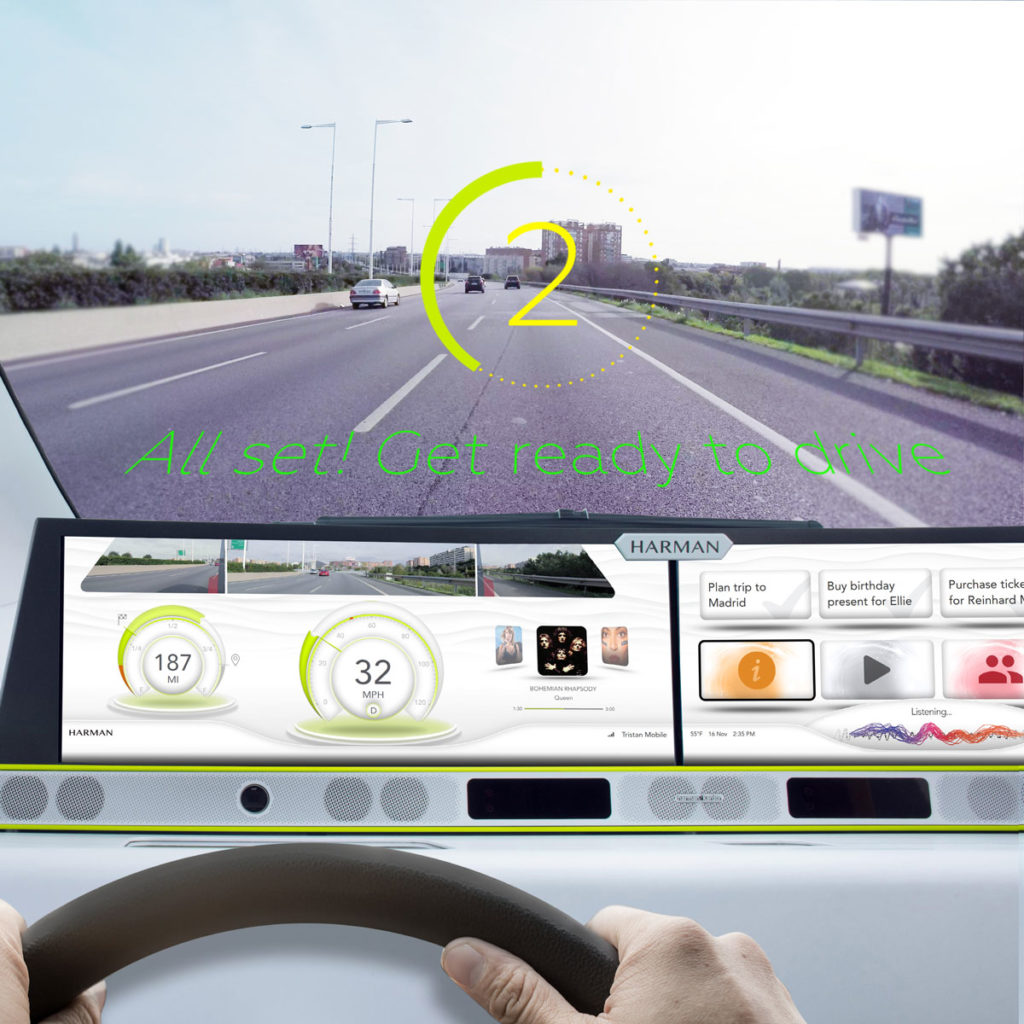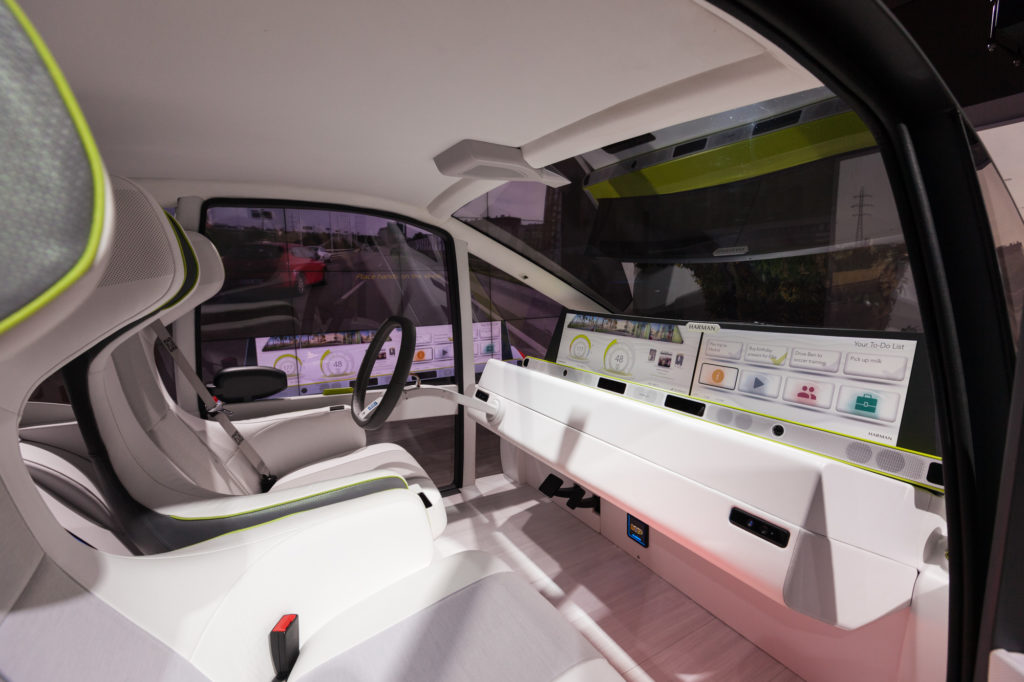Rashmi Rao, global head, early customer engagement at Harman International Industries, talks about the research her group has done into the level of trust users have in AVs and ADAS features. She further highlights the importance of the user experience in this relationship. Tom Wellings, principal designer of user experience at Huemen Design Agency (Harman) will talk in more detail about the UX in AVs at the Autonomous Vehicle Interior Design & Technology Symposium. Purchase your delegate pass here.
Tell us about your presentation.
 Studies show that most users of advanced driver assistance features don’t understand the limitations of the technology, leading to a degree of mistrust. Harman’s studies show that trust and transparency are key factors for a successful human-machine collaboration that is central to autonomous driving.
Studies show that most users of advanced driver assistance features don’t understand the limitations of the technology, leading to a degree of mistrust. Harman’s studies show that trust and transparency are key factors for a successful human-machine collaboration that is central to autonomous driving.
A user-focused approach promotes user confidence and empowers users to make better choices. This is imperative as we transition from a philosophy that minimizes driver distraction to one that instead seeks to maximize driver attention. Harman will showcase a new canvas for designers to create a collaborative human-machine interface, including AR and VR to empower users to develop trust and understanding of technology for an autonomous world.
What are the most important tools in establishing trust and transparency with AVs?
At Harman, my team ran a study, primarily to understand the gaps in current-day technology related to semi-autonomous vehicles. We called it the ‘Tesla Novice Study’. None of the participants had either driven a Tesla or experienced Auto Pilot prior to this study. However, all participants did have at least 3 months’ experience with features such as lane keeping, steering assistance and regular adaptive cruise control.
The findings from this study were very insightful. They have helped us create the ‘Harman approach’ towards addressing trust and transparency for Human-machine collaboration in autonomous and semi-autonomous vehicles. We describe it as 4 pillars: trusted, transparent, humanized and fluid.
With trusted, we mean that the vehicle behaves and communicates in a reliable and consistent way. Drivers and occupants wish for multimodal cues for transitioning self-driving modes. Transparent means that the vehicle communicates its state and intentions clearly to the driver. Drivers need an informational display that communicates what the vehicle is sensing and planning, to enable trust.

AVs also need to be humanized as the expectation is that the vehicle is a teammate in the autonomous interaction. Humanized technology gains trust by giving users an understanding of how the system works, to enable seamless transitions. Users create mental models to understand how the autonomous vehicle works to be aware of any limitations. Finally, the UX needs to be fluid. In other words, it has to be versatile and adaptable to personal preferences. Drivers and occupants want to be able to customize the drive including minor inputs to vehicle dynamics to make it feel more like how they would drive their vehicles and thus enhance the autonomous experience without interrupting the automated mode.
It is also often the case that users overestimate, rather than mistrust the capabilities of AV and ADAS features. To what extent is this a problem and how can UX design help in resolving this?
That is a very real and equally important topic to address. In a recent study completed by AAA (American Automobile Association), researchers evaluated drivers’ opinions, awareness and understanding of these level 2 and level 3 technologies and found that most did not know or understand the limitations of the systems. False expectations for ADAS systems can easily lead to misuse of the technology or an increase in driver distraction.
In the survey, about 25% of drivers using blind spot monitoring or rear cross-traffic alert systems reported feeling comfortable relying solely on the systems and not performing their own visual checks such as looking over their shoulder for oncoming traffic or pedestrians. About 25% of owners of vehicles with forward collision warning or lane departure warning systems reported feeling comfortable engaging in other tasks while driving.

Current UX issues with ADAS features demonstrate an urgent need for a well-thought-out human-machine collaboration. This means that the vehicle informs the user of the system limitations, and influences user mental models to correctly understand how systems work. Finally, the UX should increase situation awareness, both of the vehicle status itself and of traffic situations.
A collaborative research study done in Germany found that if drivers of automated vehicles in a simulator were given information about how certain the automated vehicle was about a situation, this would increase the time before drivers had a collision. In addition, it boosted trust and acceptance of the system, situation awareness, and knowledge of system fallibility.
At Harman, we are focusing on developing a ‘new canvas’, leveraging advanced display and audio technology that allows the user to maintain situation awareness while enjoying the benefits of autonomy. In particular, we are developing advanced display technologies such as QLED and OLED that are capable of displaying deeper, more saturated colors to show more life-like camera images as well as to allow for 3D augmented reality (AR) to be overlaid. We are also focusing on voice AI and audio technology that enable bi-directional natural language communication to support the two-way collaboration between vehicle and driver.

Rashmi’s colleague Tom Wellings will present ‘UX as the tool for human-machine collaboration’ at the Autonomous Vehicle Interior Design & Technology Symposium, which is held during Autonomous Vehicle Technology Expo in Stuttgart on May 21-23. For more information about the Expo and Conference, as well as full conference programs, head to the event website. Expo entry is free of charge, but rates apply for conference passes, which provide access to three symposiums: Test & Development, Software & AI and Interior Design & Technology.


